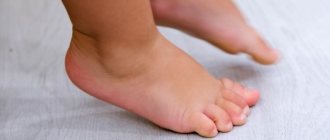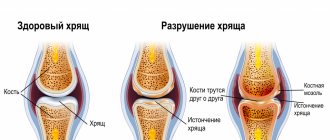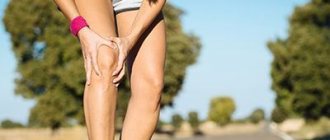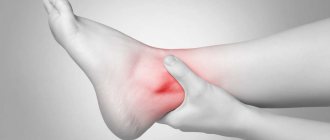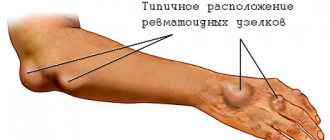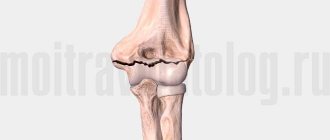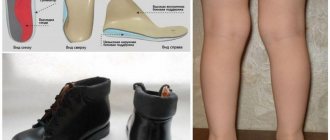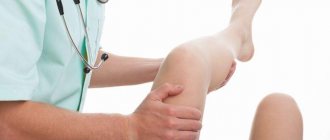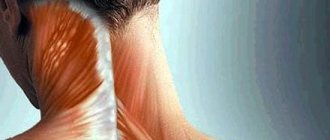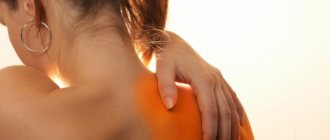The longitudinal and transverse arches of the foot, like springs, absorb and distribute the load on the legs when walking. When transverse flatfoot occurs, the metatarsal bones “spread apart” and the foot begins to resemble a crow’s foot. In this case, the transverse arch of the foot “sags”. We will try to figure out what side effects arise from this and how to live with them. Forward!
- Transverse flatfoot - what is it?
- Why does transverse flatfoot occur?
- “Alarm bells”: how to recognize transverse flatfoot in yourself
- When is it time to worry: degrees of transverse flatfoot
- Orthopedic insoles for transverse flat feet
- Top 5 products for the foot with transverse flatfoot
- Gymnastics for transverse flat feet
- Self-massage for transverse flat feet
- The bitter consequences of transverse flatfoot: why you need to start treatment now
- Conclusion: life without transverse flatfoot
Transverse flatfoot - what is it?
With transverse flatfoot, the metatarsals of the feet diverge to the sides, and the forefoot widens. Because of this, the foot begins to rest on the second, third and fourth heads of the metatarsal bones, and not on the first and fifth, as it should normally be. And if earlier the 2nd, 3rd and 4th heads of the metatarsal bones were relaxed, then with flat feet they begin to take on the entire load. As a result, due to a malfunction of the muscles, the thumb moves to the side, and its joint grows and turns into a “bump.” This is how a hallux valgus deformity is formed, or, as we used to say, a “bunion” on the foot.
Main symptoms, signs of flat feet
You can diagnose the presence of flat feet yourself. To do this you need to follow simple steps:
1. Apply a layer of rich cream to your foot.
2. Stand on a blank sheet of paper, resting your weight on your entire foot.
3. Evaluate the shape of the print to determine whether there is flatfoot or not.
There is no flat foot when a groove is clearly visible from the inside of the foot, and its width is approximately ? foot width.
If it is not there or the width does not meet the requirements, there are reasons to visit a doctor with suspected flat feet.
Why does transverse flatfoot occur?
Transverse flatfoot can appear for several reasons - hereditary or acquired. Here are the main ones.
– Genetics. Genetic weakness of the musculo-ligamentous system is most often inherited through the female line. In men, hereditary flat feet develop less frequently. Thus, women are at risk!
– Wrong shoes. If you do not want to develop or worsen transverse flat feet, do not wear high-heeled shoes, shoes with tapered toes, or shoes with hard, stiff soles. It is better to choose comfortable shoes with low heels. And put things in order in your shoe closet: replace shoes with unevenly worn soles, because they will maintain the “wrong” position of the feet and slow down the process of their recovery.
– Muscle weakness. Weakening of the joint muscles is a consequence of a passive lifestyle and “sedentary” work. Move! Then your leg muscles will be stronger and more resilient.
- Overweight. Due to extra pounds, the load on the legs becomes too high, and the muscles are unable to perform their basic functions.
- Standing work. Constantly standing will cause your legs to suffer from static stress. And it unnecessarily tires the muscles and increases the risk of developing transverse flat feet. In addition, due to standing work, the blood supply to the legs deteriorates, pain and tension appear.
– Injuries. When the arch of the foot is initially normal, flat feet can develop as a result of injury. This usually occurs due to a fall from a height, a car accident, or a sports injury.
Advantages of taping
The advantage of kinesio taping is that it does not restrict human movement. In combination with exercise therapy and manual techniques (massage), the application of elastic bandages provides a good therapeutic effect, manifested in:
- relieving pain in the sole,
- foot support,
- strengthening ligaments and muscles,
- joint restoration,
- reducing swelling.
Tapes are made from elastic, hypoallergenic material that provides the necessary ventilation of the skin and has water-repellent properties. The application of elastic bands stays firmly on the skin for several days.
“Alarm bells”: how to recognize transverse flatfoot in yourself
In order to identify the first signs of transverse flatfoot, it is not necessary to go to the doctor. To begin with, you can conduct a “home” diagnosis.
Feelings: what do you feel?
As a rule, the main noticeable symptom of transverse flatfoot is pain: aching, pulling or burning pain, mainly in the area of the 1st - 2nd metatarsophalangeal joints. Usually the pain intensifies after physical activity or a long “standing” position. Often the feet and ankles swell in the evening.
Visual cues: what do you see?
To recognize transverse flat feet, you can look at your feet. You can see the following:
- The big toe is deformed and there is a “bump” on the foot. As a consequence of transverse flatfoot, the joint of the big toe enlarges, and an inflamed “bone” grows on the side of the foot.
- There are calluses on the sole of the forefoot. Another sign of transverse flatfoot is calloused skin on the sole of the forefoot.
- The foot has become wider. We have already said that with transverse flatfoot, the foot flattens and “spreads out”. This is true. If your usual shoes suddenly begin to press on the sides, think about it!
Home test to detect transverse flatfoot
To determine at home whether you have transverse flatfoot, do a simple test. To do this, smear one of the feet with watercolor.
Normally, the foot print should occupy between one-third and one-half of the line. If it goes beyond these values, then it’s time to go to the doctor. The specialist will conduct a more accurate diagnosis and identify the specific stage of the disease.
Professional diagnostic methods
Transverse flatfoot can also be identified at an appointment with a specialist. There are several professional diagnostic methods.
X-ray. Perhaps the easiest way to diagnose. The x-ray image shows the extent of the disease, and if you “remove” the feet regularly, you can track the dynamics of the progression of the disease.
Podography. This method involves a specialist examining the characteristics of gait and the periods of foot rolls.
Electromyography. In this method, the doctor examines the activity of the muscles of the feet. Their position directly indicates the severity of flat feet and the level of development of the disease.
Cost of services in the direction of “Medical massage”
| Services list | Duration | Price, rub |
| Back + Legs Massage | 55 min. | 3700 |
| Therapeutic back massage | 25-40 min. | 3000 |
| Neck massage | 15 minutes. | 2200 |
| Massage of the thoracic spine | 15 minutes. | 2200 |
| Massage of the lumbosacral spine | up to 30 min. | 2200 |
| Massage of the collar area + one upper limb (arm) | 30 min. | 3000 |
| Neck massage + two upper limbs | 40 min. | 3900 |
| Neck massage + chest massage | 40 min. | 3900 |
| Massage of one upper limb | 15 minutes. | 2200 |
| Massage of two upper limbs | 30 min. | 3000 |
| Chest massage | 15 minutes. | 2200 |
| Massage of the lumbosacral spine + one lower limb (leg) | 30 min. | 3000 |
| Massage of the lumbosacral spine + two lower limbs | 45 min. | 3900 |
| Massage of one lower limb | 20 minutes. | 2200 |
| Massage of two lower limbs | 30 min. | 3000 |
| Cupping massage (dynamic setting) | 25 min. | 2200 |
| Therapeutic back massage + cupping massage | 40 min. | 3900 |
| General therapeutic massage | 120 min. | 6900 |
| Modeling massage (for weight loss) (Thighs, Buttocks, Abdomen) | 45 min. | 5800 |
| Anti-cellulite full body massage | 90 min. | 7200 |
| Head massage | 20 minutes. | 2200 |
| Neck and collar area massage | 20 minutes. | 2200 |
Contact us
Call now
8 (495) 803-27-45
Make an appointment through our service
Make an appointment
When is it time to worry: degrees of transverse flatfoot
The main “beacon” of transverse flatfoot is an inflamed joint of the big toe. According to the degree of its curvature, three degrees of transverse flatfoot are distinguished:
1st degree - the angle of deviation of the big toe is less than 20 degrees, mild transverse flatfoot.
2nd degree - angle of deviation of the big toe - 20-35 degrees, moderately pronounced transverse flatfoot.
3rd degree - the angle of deviation of the big toe is more than 35 degrees, pronounced transverse flatfoot.
Unfortunately, it is possible to correct transverse flatfoot without surgical intervention only at stage 1 of the disease. To do this you should:
- Lose extra pounds, if you have them;
- Avoid high heels;
- Do massage or self-massage of the feet;
- Do therapeutic exercises;
- Wear orthopedic insoles and foot products;
- Reduce the load on your feet.
With grades 2 and 3, you can only stop the progression of flat feet and prevent it from developing further. That is why, as soon as you notice the first signs of transverse flat feet, immediately begin to act. The earlier the better!
Alarm signals or whims?
But the baby’s recurring complaint: “My legs hurt!” – an indirect sign of flat feet. The baby will not describe in detail how and where exactly it hurts, he simply will not find the right words. It is almost impossible to calculate pathology visually if you are not a doctor. But an orthopedist or foot specialist - podiatrist, having suspected a problem, will conduct tests and examine the baby using a special device - a podoscope. It will clearly show whether the “architecture” of the vaults is developing correctly.
What are we talking about? Without our foot being an ideal shock absorber, walking, running and jumping would turn into a series of endless tremors and micro-impacts to the spine, transmitted to the internal organs and brain. However, nature gave us three arches in the foot (internal, external and transverse). Here they are - three springs, which make walking comfortable at any age. However, if they “sag” or are initially formed incorrectly, flat feet develop.
It comes in three types (depending on which of the arches “sank”): transverse, longitudinal, or mixed, which is a combination of both of these forms.
You should see a podiatrist as a preventative measure when your baby begins to walk. Then the examination must be carried out every two years - at 3, 5, 7 years. Upon reaching school age - once a year. Unfortunately, modern schoolchildren often lead a sedentary lifestyle, and accordingly, orthopedic problems worsen and accumulate.
Orthopedic insoles for transverse flat feet
To keep your feet healthy, make it easier on them. Orthopedic insoles will help you with this. Unlike conventional flat insoles, orthopedic ones have special elements that keep the foot in the correct position - supporting the arches and activating natural support points.
Special orthopedic insoles for bunions
Orthosoles with “underwires” raise the outer joints of the toes and force the transverse arch of the foot to rest on them. The fact is that the muscles of the foot feel areas of support and reflexively work in such a way that the foot rests on those places where it feels this support. Thus, a correction occurs - the foot “gets used” to resting on the joints of the big toe and little toe.
Exercise insoles simulating barefoot walking
Insoles-simulators are a tool for the prevention of transverse flat feet. Their main task is to prevent your feet from “spreading out” while you are busy with everyday activities.
Orthopedic insoles made of “weightless” material for all types of flat feet
Orthopedic insoles made of “weightless” material are lightweight and quick to get used to. They are made of one-piece flexible and very light material. They keep their shape well even without adding extra weight to them. The longitudinal rise of these insoles is very smooth, so their relief is not pronounced, which means you won’t have to get used to them, and you will immediately feel lightness and comfort when walking.
Material
It is best to choose shoes made from natural materials - leather, nubuck, suede or textiles. This is done, among other things, for prophylactic purposes, to prevent diaper rash and fungal diseases. Faux leather interferes with natural air exchange, which has a detrimental effect on blood circulation in tissues and joints. With arthrosis, this situation is especially dangerous. Therefore, shoes or boots made of leatherette must have a textile or genuine leather lining.
Shoes made from natural materials are expensive, but provide natural air exchange
Top 5 products for the foot with transverse flatfoot
If your shoes do not allow you to insert orthotics or you want to provide support to your feet not only in shoes, but also when walking barefoot, use special foot devices.
Silicone foot ties for flat feet
These ties support the foot and massage it, improving blood flow. These ties reduce leg fatigue when walking, relieve the feeling of fatigue and pain due to flat feet.
Screeds for flat feet, replacing orthopedic insoles
Ties that replace orthopedic insoles support the arched shape of the foot, restore the correct position of the forefoot and correctly distribute the load on the foot. When wearing them, over time, corns disappear in those places where the pressure on the foot was maximum.
Silicone pads under the metatarsus with toe separator
These silicone toe pads protect the forefoot from the pain and pressure of transverse flatfoot.
Pads for hammertoes
These hammertoe pads reduce pain and pressure on the forefoot.
Ultra-thin longitudinal arch ties for flat feet and fatigue relief
Ultra-thin ties for flat feet are suitable for use in tight shoes where other orthopedic products do not fit. Their main task is to maintain the arch of the foot in a physiologically correct position.
Diagnosis and treatment of flat feet at the Miracle Doctor clinic
The orthopedist will conduct a plantoscopy, which identifies areas of weak muscles and overload of the foot, and will most likely prescribe x-rays. Based on the data obtained, the doctor will make an accurate diagnosis.
How to treat flat feet
- Orthopedic shoes and insoles for longitudinal and transverse flat feet - give the foot the correct position, minimize the load on the back, as a result, the knee joints stop hurting. The maximum benefit will come from custom-made insoles and shoes.
- Exercises and gymnastics (physical therapy) can remove minor changes in the shape of the feet, improve the arch, make the muscles stronger and the legs more resilient.
- Massage – feet, legs, back.
Prevention of flat feet
- wear comfortable, not narrow shoes made of soft leather and with flexible soles, let them have a comfortable heel of up to 4 cm;
- watch your weight;
- It is useful for expectant mothers to use orthopedic insoles;
- walk barefoot on uneven surfaces.
6 reasons to treat flat feet at the Miracle Doctor clinic
- Orthopedic doctors of the highest category and candidates of medical sciences with extensive clinical experience work for you;
- individual orthopedic leather insoles, modeled taking into account the patient’s weight and deformation of his feet, made directly in the clinic in a matter of minutes;
- kinesio taping – a special tape (tape) is glued to the body, which takes on part of the load from the foot, reduces pain and prevents the disease from getting worse;
- physical therapy - for example, sinus-modulated currents (myostimulation), which trains weak leg muscles;
- foot casts and insoles using Sursil Ortho technology – are modeled taking into account the patient’s weight and the deformation of his feet using a heated polymer blank, ultimately completely repeating the shape of the legs;
- improvements after the first dose in almost all patients.
It is now clear that properly shaped feet are not only beautiful, but also necessary for the health of the entire body. Miracle Doctors orthopedic doctors will help you find both.
Don't put off going to the doctor until later! Call us right now!
Gymnastics for transverse flat feet
We have conditionally divided exercise therapy for transverse flatfoot into exercises with and without a special stretching machine.
Exercises with a special stretching machine
A special stretching machine for the legs helps in the treatment and prevention of transverse flat feet. Its beneficial effect is as follows:
- reduction of deformation of the first metatarsophalangeal joints,
- slowing down the growth of “bones” on the thumbs,
- improving blood circulation and mobility of the joints of the feet,
- strengthening the muscles of the foot and ankle,
- relieving tension and fatigue in the legs.
Exercise No. 1. Place the stretcher on your big toes and bring your feet together. Keeping your heels connected, slowly point your toes out to the sides, hold this position for a few seconds and return to the starting position. Repeat the exercise 10 times.
Exercise No. 2. Place your feet parallel to each other at a short distance. Raise one foot up, without lifting your heel off the floor. Leave the other foot completely motionless. Hold for a few seconds and then return to the starting position. Repeat this exercise alternately on each leg 10 times. Increase the number of repetitions by 5 times every day
Exercise No. 3. Bring your feet together. Stretch the machine and fix your feet. Make springy movements to the sides, bringing your feet slightly closer to each other with a small amplitude. Repeat the swing several times, rest for a minute, then repeat the exercise.
Exercises for transverse flat feet without a stretching machine
Some of these exercises are performed while sitting on a chair, some while standing. Perform each exercise 15 times on each leg in 2-3 approaches.
- “Toe towards you - sock away from you”
Pull your toe toward your shin as tightly as possible and then extend it forward.
- "Let's roll the weight"
Take a weight or any other cylindrical “weight”. A bottle filled with water or sand will do. Roll the weight with your right and left legs alternately.
- "Let's roll the ball"
Alternately roll the tennis ball with your right or left foot, applying slight pressure to your foot. Instead of a tennis ball, you can use a massage ball.
- “Pull the sock towards you”
Use your fingers to either pull the toe of your foot towards you or relax it.
- "Rises on an elevated plane"
Stand on a stable stool or chair in this way: one foot is completely on the surface, the other only one-third. Spring up and down.
- "Walking from toe to heel"
Walk around the room barefoot, rolling your foot from toe to heel.
Self-massage for transverse flat feet
Self-massage of the feet with transverse flatfoot, unfortunately, is not able to change the shape of the foot or reduce the stage of development of the disease. However, it will help you reduce pain and fatigue in your legs, as well as restore normal blood circulation. Here are a few tricks:
- Relax your foot: gently stroke it from above, smoothly moving to the ankle. Repeat these movements 5-6 times.
- Warm up the foot: rub the sole and back of the foot for 30 seconds from the toes to the ankle.
- With both hands: clasp your foot on all sides with both hands and massage from toe to ankle for 30 seconds.
- Rotate your big toe: Grasp your big toe with your index finger and thumb and rotate it around its axis.
The video shows several simple self-massage techniques for flat feet from osteopathic doctor Vsevolod Vychuzhin.
The bitter consequences of transverse flatfoot: why you need to start treatment now
If the degree of flatfoot is slight, you may not even be aware of its presence. However, if the foot has become severely deformed, the bitter consequences of transverse flatfoot appear:
- Legs get tired quickly during physical activity;
- Swelling and pain appear;
- Knee and hip joints are overloaded;
- The spine suffers;
- The gait is deformed, “clubfoot” appears;
- Longitudinal flatfoot worsens;
- Other foot deformities also appear: bunions, heel spurs, calluses and corns;
- Blood flow in the legs is disrupted.
Therefore, as soon as you suspect that you have transverse flatfoot, run to the doctor. The sooner you start fighting transverse flatfoot, the greater your chances of preventing its terrible consequences.
The difference between taping flat feet in children and adults
Taping for clubfoot in a child in Russian pediatrics is carried out starting from 6 months of age. Abroad, childhood is not a contraindication for procedures. Taping of children is initially carried out in a test mode; the amount of tape applied should be moderate.
Advantages of applying elastic bands to children:
- regulation of muscle tone,
- prevention of edema,
- increased volume of movement,
- increasing endurance during physical activity.
Indications for taping in children, in addition to flat feet, include cerebral palsy, neurological diseases, torticollis, postural disorders, injuries, planovalgus foot deformity, delayed gross and fine motor skills of the hands, diseases of the musculoskeletal system, birth injuries, hypertonicity, decreased muscle tone.
Kinesio taping for children and adults differs in the degree of effectiveness and speed of achieving results. While in adults, elastic banding procedures generally provide symptom relief, in children, complete recovery is possible. The duration of recovery depends on the development and functioning of the musculoskeletal and joint-ligamentous apparatus.
Conclusion: life without transverse flatfoot
As we have already said, flat feet cannot be cured completely; you can only stop the process of its development and reduce the dangerous effect on the body.
If you already have flat feet:
- Are there any signs of flat feet? Let's run to the doctor! The doctor will determine the degree of transverse flatfoot and select the correct treatment.
- Do massage and gymnastics. It's effective and free.
- Wear the right shoes. Comfortable low-heeled boots that do not put pressure on your toes are suitable.
- Use orthopedic insoles. This is a good and affordable way to prevent the development of the disease.
- Use foot products. Correctors, pads and ties will strengthen the muscles of the feet, reduce discomfort, and relieve pain.
Treatment options
A congenital disease can be cured if it is not associated with chronic pathological processes such as rickets or polio. To do this, use tight bandages, massage and orthopedic shoes. There is a chance for a complete recovery - the child’s bones and cartilage are still forming, so they can be corrected.
It is more difficult to fight the acquired form. Doctors use special insoles and orthoses. Gymnastics and medications help. Nowadays, to reduce discomfort and improve the quality of life, tapes are applied for flat feet. The method allows you to artificially form the arch of the longitudinal or transverse arch of the foot.
